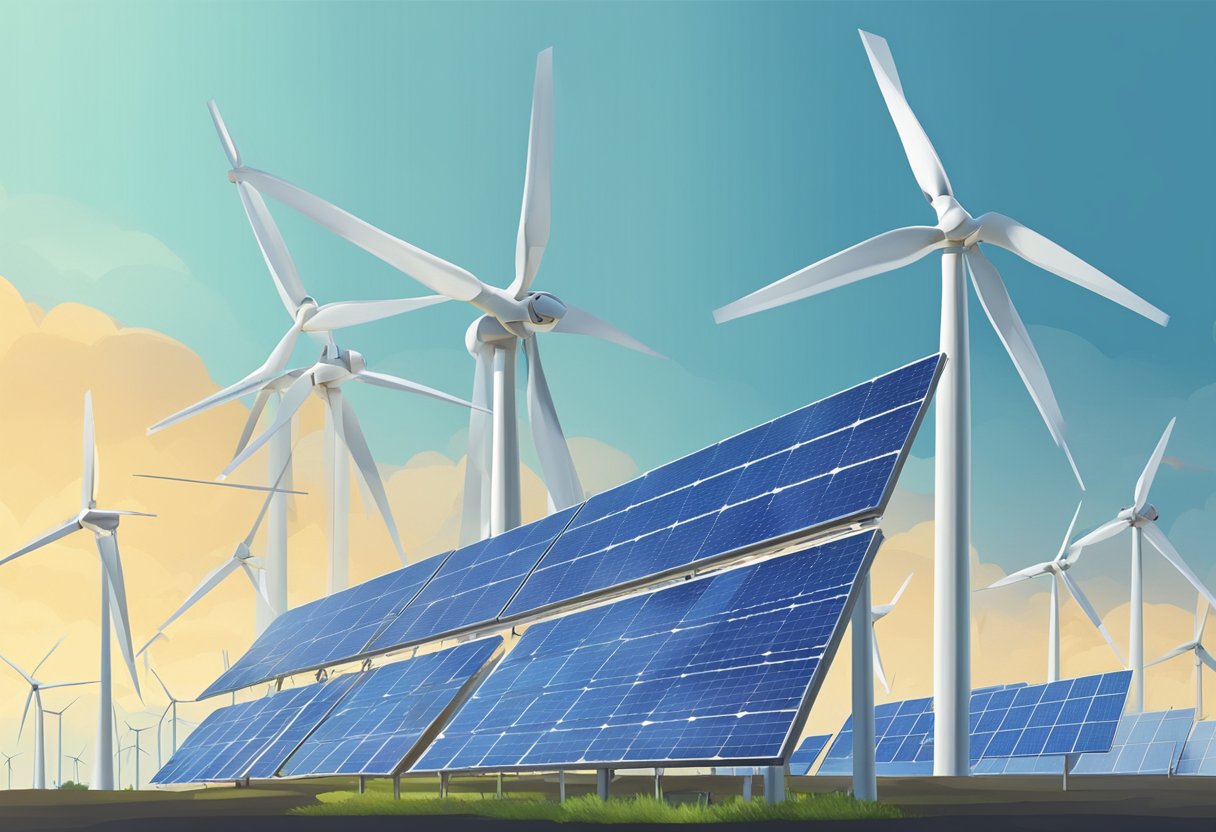Renewable energy technologies are advancing rapidly, with new breakthroughs emerging every year. These technologies are becoming increasingly important as we strive to reduce our dependence on fossil fuels and combat climate change.
In this article, we will explore some of the latest developments in renewable energy and their potential to transform the way we power our homes, businesses, and communities.
Advancements in solar energy are among the most exciting recent breakthroughs in renewable energy. According to a recent report, solar power is now the cheapest source of electricity in history, with the cost of solar panels falling by 90% in the last decade.
Innovations in solar technology, such as perovskite solar cells, are also making it possible to generate more electricity from the sun than ever before.
These developments are helping to make solar energy more accessible and affordable for people around the world.
Other renewable energy sources are also seeing progress.
Innovations in wind energy, for example, are making it possible to generate more power from wind turbines than ever before.
Progress in hydroelectric power, bioenergy, and geothermal technologies is also helping to expand the range of renewable energy options available.
Developments in energy efficiency and integration and grid modernization are also making it easier to incorporate renewable energy into our existing power systems.
Key Takeaways
- Solar power is now the cheapest source of electricity in history, thanks to recent advancements in solar technology.
- Innovations in wind energy, hydroelectric power, bioenergy, and geothermal technologies are also helping to expand the range of renewable energy options available.
- Developments in energy efficiency and integration and grid modernization are making it easier to incorporate renewable energy into our existing power systems.
Advancements in Solar Energy
Solar energy is one of the fastest-growing renewable energy sources in the world.
With the advancements in technology, solar energy is becoming more efficient and affordable than ever before.
In this section, we will discuss some of the latest breakthroughs in solar energy.
Perovskite Solar Cells
Perovskite solar cells are a new type of solar cell that has been gaining a lot of attention in recent years. They are made from a material called perovskite, which is a type of crystal structure.
These solar cells have the potential to be more efficient and cheaper than traditional silicon-based solar cells.
According to MIT Technology Review, UK-based Oxford PV has reached an efficiency of 28.6% for a commercial-size perovskite tandem cell, which is significantly larger than those used to test the materials in the lab.
Bifacial Solar Panels
Bifacial solar panels are a type of solar panel that can generate electricity from both sides of the panel.
They are becoming more popular because they can produce up to 27% more energy than traditional solar panels.
According to Solar Power World, bifacial solar panels can be installed on the ground or on rooftops, and they work best in areas with high albedo, such as snow-covered ground or white rooftops.
Solar Energy Storage Solutions
One of the biggest challenges with solar energy is storing the energy for use when the sun is not shining.
However, there have been some recent breakthroughs in solar energy storage solutions.
For example, Science Daily reports that scientists are working on developing a new type of solar cell using materials that can convert electricity more efficiently than today’s panels. This could lead to more efficient solar energy storage solutions in the future.
Innovations in Wind Energy
Floating Wind Turbines
Floating wind turbines are a relatively new technology that could potentially revolutionize the wind energy industry.
These turbines are designed to be deployed in deep waters where traditional fixed-bottom turbines are not feasible.
Floating turbines have several advantages over fixed-bottom turbines, including the ability to access stronger and more consistent winds, reduced environmental impact, and easier maintenance.
One example of a floating wind turbine is the Hywind Scotland project, which has five turbines that can generate enough electricity to power 20,000 homes.
Enhanced Offshore Wind Systems
Offshore wind power is becoming an increasingly important source of renewable energy.
Enhanced offshore wind systems are being developed to increase the efficiency and reliability of offshore wind turbines.
One example of an enhanced offshore wind system is the use of larger turbines with longer blades.
Longer blades can capture more wind energy and generate more electricity.
Another example is the use of advanced control systems that can optimize the performance of wind turbines in changing wind conditions.
Vertical-axis Wind Turbine Designs
Vertical-axis wind turbines (VAWTs) are a type of wind turbine that have the main rotor shaft arranged vertically.
VAWTs have several advantages over traditional horizontal-axis wind turbines (HAWTs), including the ability to operate in turbulent wind conditions and the ability to be mounted closer together.
One example of a VAWT design is the Darrieus wind turbine, which has curved blades that can generate lift in a similar way to an airplane wing.
Another example is the Savonius wind turbine, which has a simple design and can be made from recycled materials.
Progress in Hydroelectric Power
Hydroelectric power has been a reliable source of renewable energy for over a century. However, recent advancements in technology have made it more efficient and cost-effective.
This section will explore some of the latest breakthroughs in hydroelectric power.
Modular Hydro
Modular hydro is a new type of hydroelectric power plant that uses prefabricated modules to generate electricity.
These modules can be quickly assembled and installed, making it easier and faster to build hydroelectric power plants.
Modular hydro power plants are also more flexible and can be easily expanded or downsized depending on the energy demand.
Tidal Energy Converters
Tidal energy converters are devices that harness the power of ocean tides to generate electricity.
These devices work by using the kinetic energy of the tides to turn turbines, which then generate electricity.
Tidal energy converters are becoming more popular because they are more predictable than other forms of renewable energy, such as wind and solar power.
Wave Energy Advancements
Wave energy converters are devices that capture the energy of ocean waves to generate electricity.
Recent advancements in wave energy technology have made it more efficient and cost-effective.
For example, some wave energy converters now use a system of buoys and pumps to capture the energy of waves and convert it into electricity.
These devices are also more reliable and can withstand harsh ocean environments.
Breakthroughs in Bioenergy
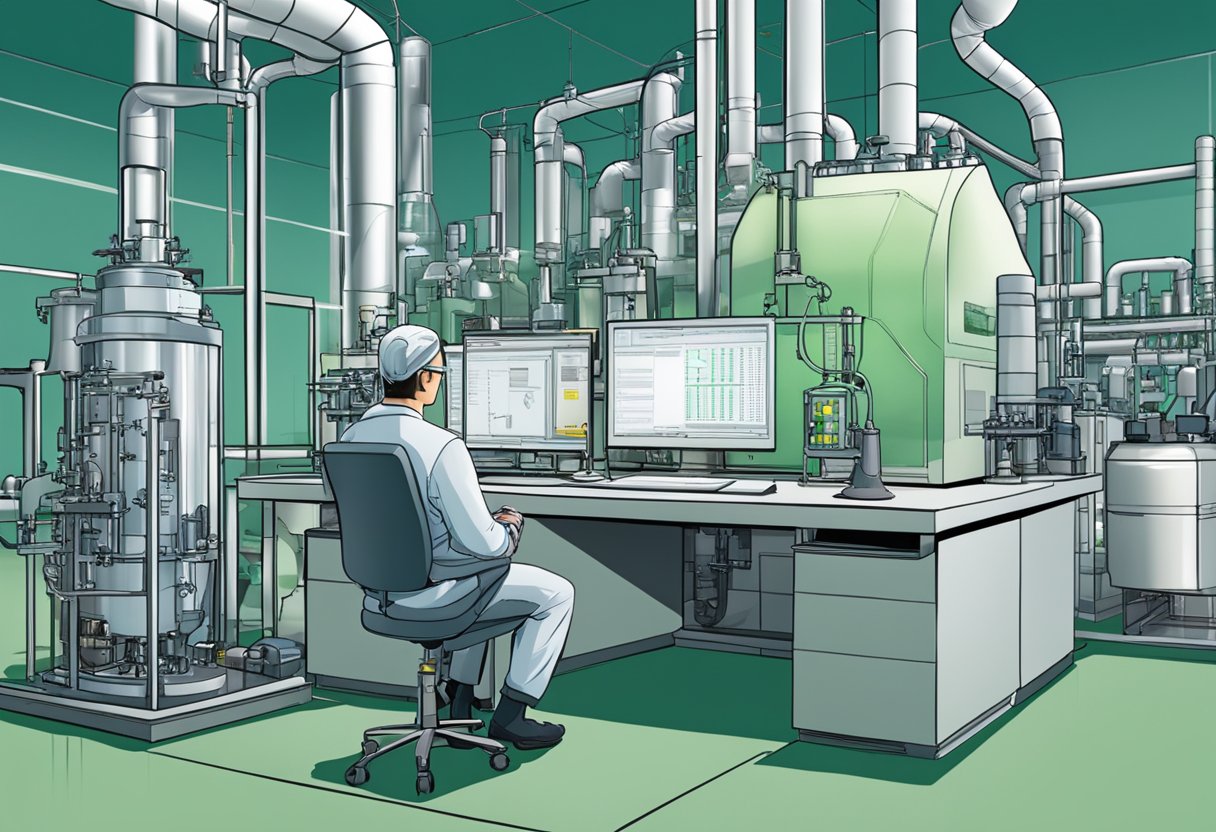
Bioenergy is a renewable energy source that is derived from organic matter such as plants, animals, and their byproducts.
In recent years, there have been significant breakthroughs in bioenergy technologies that have made it a more viable and sustainable option for meeting the world’s energy needs.
Algal Biofuels
One promising area of research in bioenergy is the development of algal biofuels.
Algae are photosynthetic organisms that can produce high amounts of lipids, which can be converted into biofuels.
According to a Department of Energy article, researchers funded by the Bioenergy Technologies Office (BETO) are making significant progress in this area.
They have developed new strains of algae that can produce more lipids than previous strains, and have improved the efficiency of the conversion process.
Waste-to-Energy Technologies
Another breakthrough in bioenergy is the development of waste-to-energy technologies.
These technologies involve converting waste materials into energy.
According to an article by the Department of Energy, researchers are using a variety of waste materials, such as agricultural residues, municipal solid waste, and forest residues, to produce bioenergy.
These waste-to-energy technologies not only provide a sustainable source of energy, but also help to reduce waste and greenhouse gas emissions.
Advanced Bioenergy Cropping Systems
Advanced bioenergy cropping systems are another area of research in bioenergy.
These systems involve using crops that are specifically grown for bioenergy production.
According to an article by the Department of Energy, researchers are developing new cropping systems that are more efficient and sustainable than previous systems.
These new systems involve using crops that require less water and fertilizer, and can be grown on marginal lands that are not suitable for food crops.
Emerging Geothermal Technologies

Geothermal energy is a clean and renewable energy source that has been used for centuries. In recent years, there have been significant breakthroughs in geothermal technology that have made it more efficient, cost-effective, and accessible. Here are some of the emerging geothermal technologies that are changing the game.
Enhanced Geothermal Systems
Enhanced Geothermal Systems (EGS) are a type of geothermal technology that involves drilling deep into the earth’s crust and injecting water at high pressure to create fractures in the rock.
This process creates a reservoir of hot water that can be pumped to the surface to generate electricity.
According to MIT Technology Review, EGS could potentially generate up to 10% of the world’s electricity by 2050.
Superhot Rock Energy Extraction
Superhot Rock Energy Extraction (SHRE) is a new type of geothermal technology that involves drilling deep into the earth’s crust to access superhot rocks that are over 400 degrees Celsius.
The heat from these rocks can be used to generate electricity without the need for water. According to a recent study, SHRE could potentially generate up to 100 times more electricity than traditional geothermal systems.
Geothermal Heat Pumps
Geothermal heat pumps (GHPs) are a type of geothermal technology that use the earth’s natural heat to provide heating, cooling, and hot water for buildings.
GHPs work by circulating a fluid through a series of pipes buried in the ground, which absorbs heat from the earth in the winter and releases heat back into the ground in the summer. According to the U.S. Department of Energy, GHPs can reduce energy consumption by up to 50% compared to traditional heating and cooling systems.
Developments in Energy Efficiency
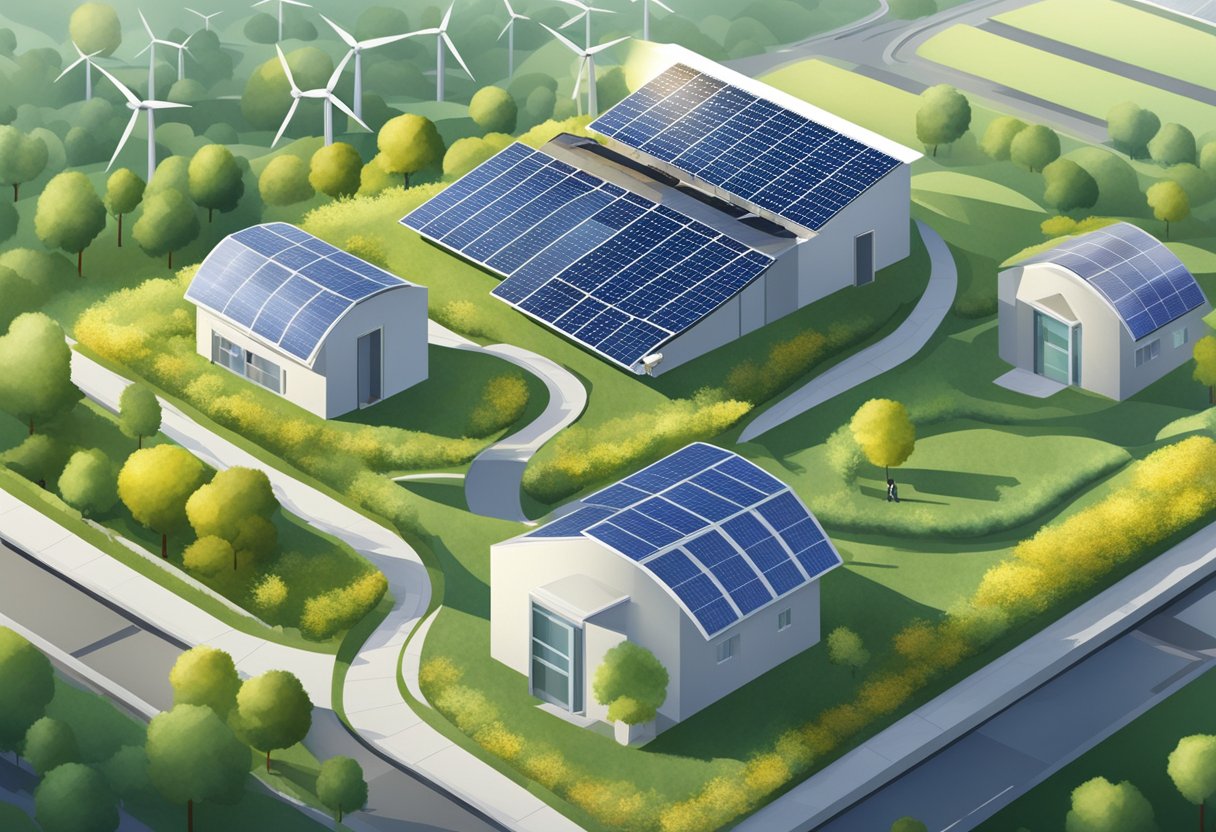
As the world continues to grapple with the effects of climate change, the demand for renewable energy technologies has increased. One area that has seen significant progress in recent years is energy efficiency. In this section, we will explore some of the latest breakthroughs in energy efficiency.
Smart Grids
Smart grids are an important development in energy efficiency. They use advanced sensors, communication, and control technologies to optimize the production, distribution, and consumption of electricity.
Smart grids can help reduce energy waste, improve reliability, and facilitate the integration of renewable energy sources into the grid.
One example of a smart grid technology is demand response. This technology allows utilities to adjust electricity usage in response to changes in demand. For example, during periods of high demand, utilities can reduce energy consumption by turning off non-essential equipment or increasing the temperature in buildings.
Nanotechnology in Energy Materials
Nanotechnology is another area that has seen significant progress in energy efficiency. By manipulating materials at the nanoscale, researchers have been able to develop new materials that are more efficient at converting energy.
For example, nanotechnology has been used to develop solar cells that are more efficient at converting sunlight into electricity. In addition to solar cells, nanotechnology has also been used to develop energy storage materials.
These materials can store energy more efficiently than traditional batteries, making them ideal for use in renewable energy systems.
Energy-Saving Building Designs
Energy-saving building designs are another important development in energy efficiency. By designing buildings that are more efficient at retaining heat and reducing energy waste, it is possible to reduce the amount of energy required to heat and cool buildings.
One example of an energy-saving building design is passive solar design. This design approach uses the sun’s energy to heat buildings during the winter and keep them cool during the summer.
Other energy-saving building designs include green roofs, which help insulate buildings and reduce the amount of energy required for heating and cooling, and energy-efficient windows, which reduce heat loss and gain.
Integration and Grid Modernization
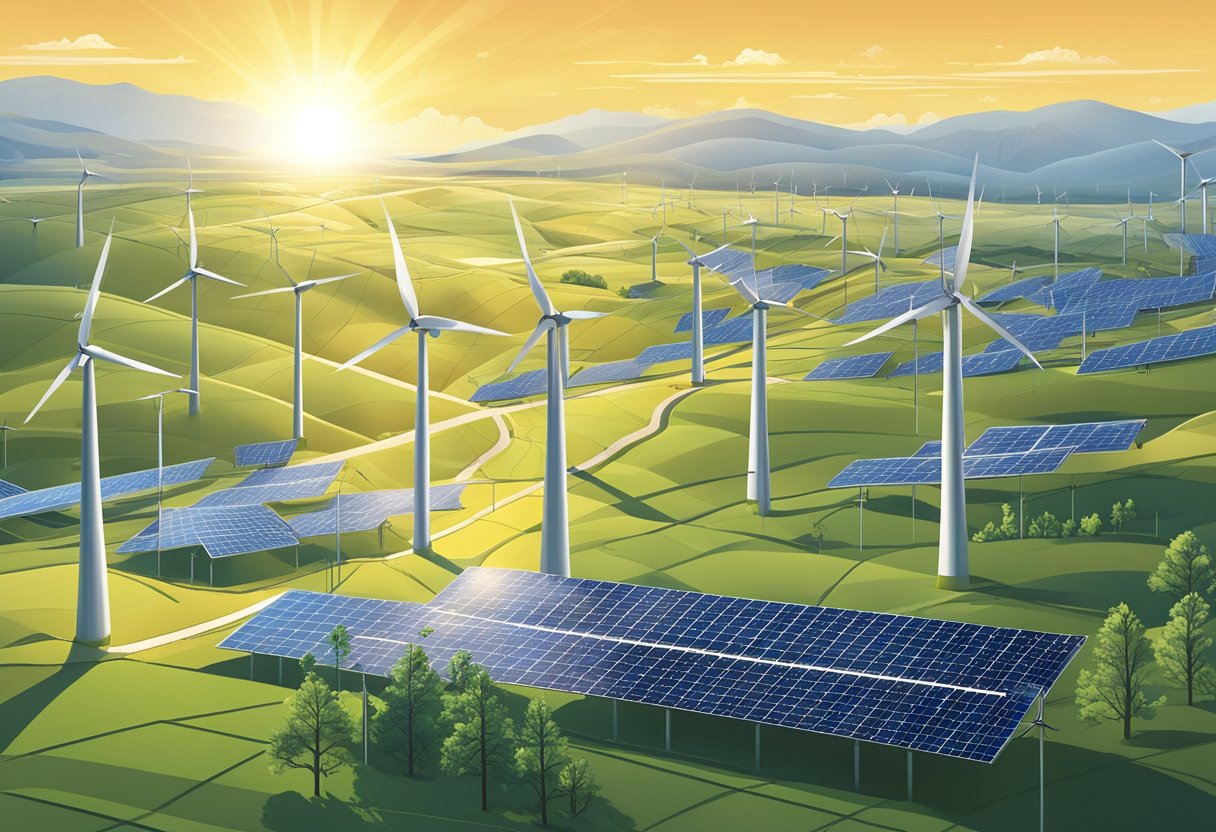
Renewable energy technologies are rapidly advancing, and their integration into the grid is a critical step towards a sustainable energy future. Integration and grid modernization are essential for the efficient and reliable operation of the grid. In this section, we will discuss the latest breakthroughs in integration and grid modernization technologies.
Energy Management Systems
Energy management systems (EMS) are software applications that help manage and optimize the energy usage of buildings and other facilities.
EMS can help reduce energy consumption and costs by analyzing energy usage patterns and identifying areas for improvement. They can also help integrate renewable energy sources into the grid by managing the supply and demand of electricity.
One of the latest breakthroughs in EMS is the use of machine learning algorithms. Machine learning algorithms can analyze large amounts of data and identify patterns that can be used to optimize energy usage.
This technology is particularly useful for managing the energy usage of large buildings and facilities.
Demand Response Technologies
Demand response technologies (DRT) are technologies that help manage the demand for electricity during peak periods.
DRT can help reduce the strain on the grid during peak periods and avoid blackouts. They can also help integrate renewable energy sources into the grid by managing the supply and demand of electricity.
One of the latest breakthroughs in DRT is the use of smart thermostats. Smart thermostats can automatically adjust the temperature of a building based on occupancy patterns and weather conditions.
This technology can help reduce energy consumption and costs while also managing the demand for electricity during peak periods.
Grid-Scale Energy Storage
Grid-scale energy storage (GSES) is a technology that allows energy to be stored and used when needed.
GSES can help integrate renewable energy sources into the grid by storing excess energy during periods of low demand and releasing it during periods of high demand. GSES can also help reduce the strain on the grid during peak periods and avoid blackouts.
One of the latest breakthroughs in GSES is the use of flow batteries. Flow batteries are a type of battery that uses liquid electrolytes to store and release energy.
This technology is particularly useful for storing large amounts of energy for long periods of time.
Policy and Market Dynamics
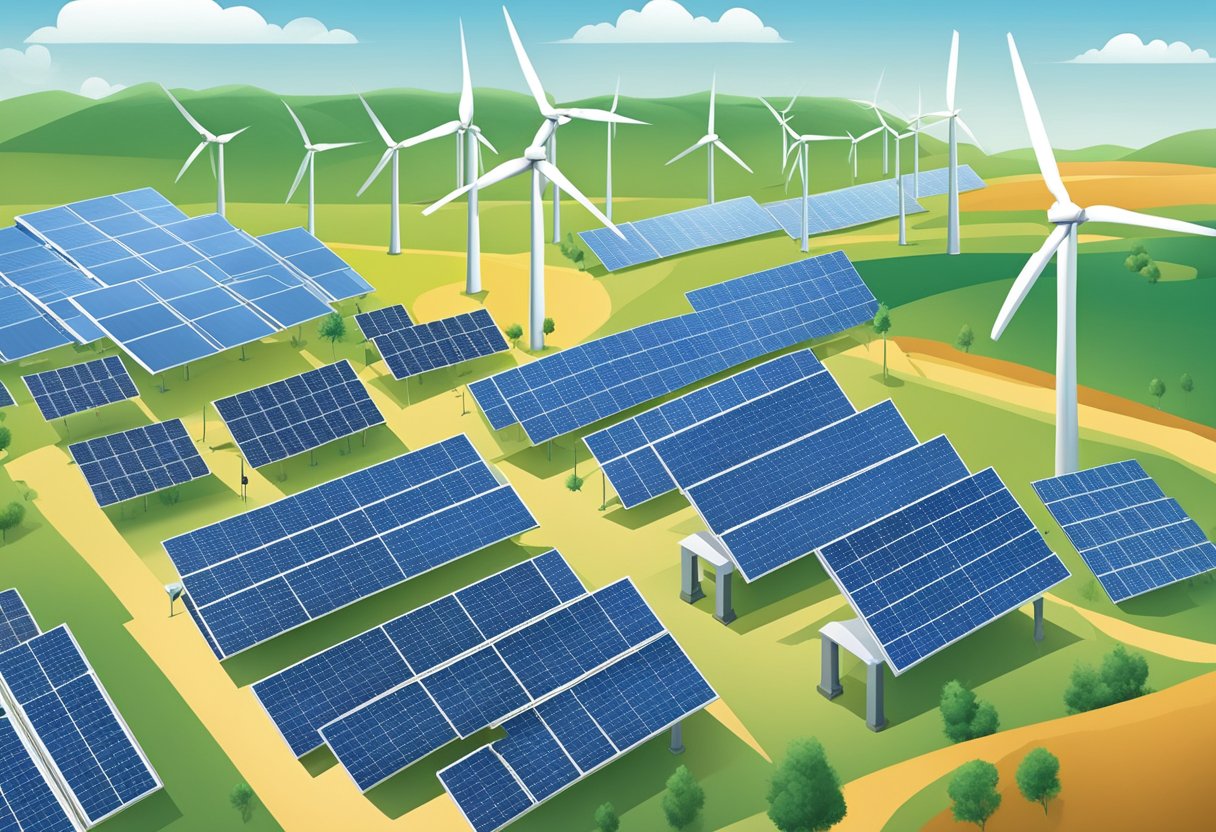
Renewable Energy Incentives
Governments around the world have implemented various incentives to encourage the adoption of renewable energy technologies. These incentives include tax credits, subsidies, and feed-in tariffs.
For example, the United States federal government offers a production tax credit for wind and solar energy, which has helped spur the growth of these industries. Similarly, many countries in Europe have implemented feed-in tariffs, which require utilities to purchase electricity generated from renewable sources at a premium price.
Global Renewable Energy Agreements
The Paris Agreement, signed in 2015, is a global agreement to combat climate change by limiting global warming to well below 2 degrees Celsius above pre-industrial levels.
As part of the agreement, countries have committed to increasing the share of renewable energy in their energy mix. The International Renewable Energy Agency (IRENA) has also set a goal to double the share of renewable energy in the global energy mix by 2030.
Market Trends and Forecasts
Renewable energy technologies have become increasingly competitive with traditional fossil fuel sources in recent years.
The cost of solar photovoltaic (PV) and wind power has decreased significantly, making them more cost-effective than coal and natural gas in many parts of the world.
According to the International Energy Agency (IEA), renewable energy is expected to account for 80% of new power generation capacity additions by 2030.
The IEA also predicts that renewable energy will become the largest source of electricity generation by 2025.

